Visiting Salt Pans in Petchaburi, Thailand
I’ve had a fascination with salt pans or salt evaporation ponds ever since the time we were returning to Bangkok, just before sunset, and to the west I watched the fire and marmalade light up the sky and reflect off one of the partly flooded fields filled with its orderly arranged white pyramids. A worker in a broad-brimmed hat walked across, his silhouette black against the colorful light or sky and water. No chance to stop for a photo as we were on the freeway, but the image stuck with me for years. Then in 2009 on a Thailand birding trip we were passing by in the harsh mid-day light and had time to stop and take just a few photos.

Our timing was off and we saw none of the little white pyramids of salt, though the workers were out preparing the evaporation ponds for another “harvest.”

The family of one of our friends in Bangkok harvests salt on their land and they gave us a jar of sea salt to take home for cooking. Then a couple years ago I read Salt: A World History, showing how salt could make and break empires, even win wars, and it only intrigued me more. We finally had the free time (as did our friends Ray and Nok who have a car). But we wanted the perfect light, so it meant driving down on a Saturday night to be ready for Sunday morning.
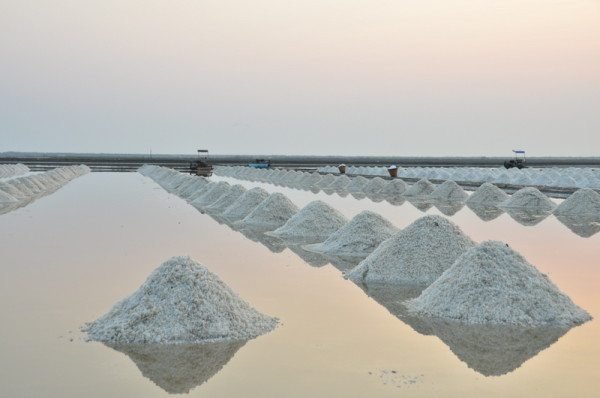
The place to see them is Petchaburi, down the coast of the Bay of Thailand from Bangkok, where the land isn’t much higher than the sea. Here the fields stretch out in all directions in between little seaside communities. They can be seen on Google maps satellite images, white squares along the coast. We booked a hotel in Petchaburi. (i Tara Resort in Petchaburi which is a short distance from an area thick with salt pans. It’s right on Chao Samran Beach, has really nice rooms, pool, and includes a big breakfast buffet with atrocious coffee.) The white pyramids of salt might not be there the night before. Workers, who begin the day before the sun does, can pull enough of these together to pill an entire section in a very short period of time.
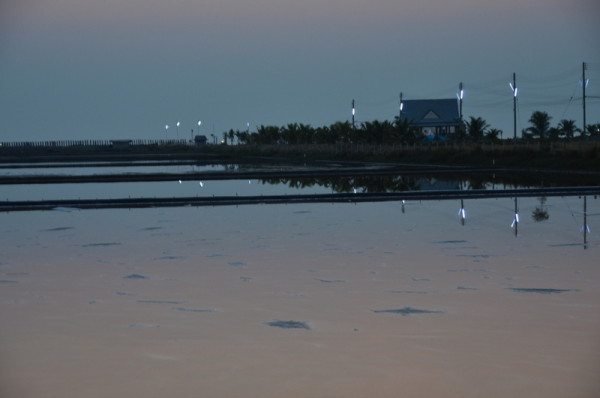
Long fluorescent bulbs are strung from power lines along the dirt roads in between creating a strange atmosphere in the pre-dawn light.
A flock of birds over the landscape. The early bird may catch the worm, but they also avoid the intense heat of the day by feeding in the early morning.
The workers gather at the roadside and a food cart brings them breakfast before they start their work day. The sun isn’t quite up yet.
The moon over the salt pans just before dawn.

Then the work begins, and it goes a lot faster than we expected.
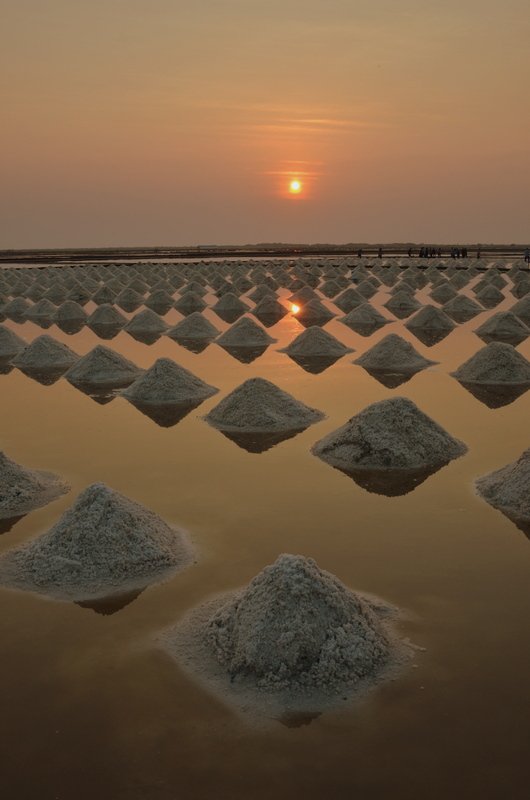
The process is solar and wind power, not different from how it has been done since ancient history. The sea water evaporates and as it gets more concentrated, it is moved to areas closer to a central processing location, either by gravity or in some cases pumps. When the concentration is high enough, the salt crystallizes out of solution, and the gathering begins. First it is plowed by hand into long rows, then cut into smaller ridges before being gathered into pyramid shapes.

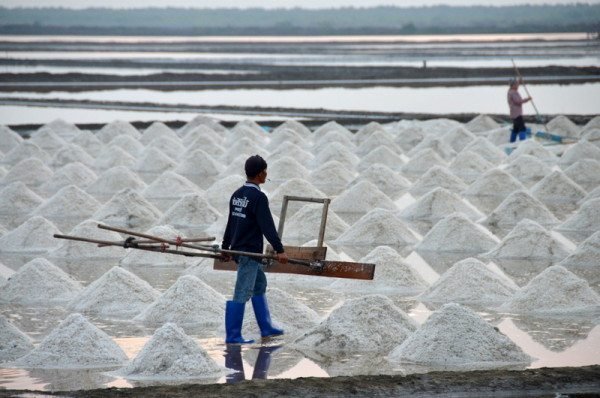



Along the road, overflow in a ditch evaporates leaving interesting patterns.
Some of the salt is destined for kitchens while lower grade varieties may end up on highways in the northern hemisphere during winter.
The ponds are not void of life, despite the high salinity. Black winged Stilts and other waterbirds find their meals in their waters. Algae and bacteria cause the varying colors as well.
If You Go
The area we explored is about 2 hours/132 km from Bangkok in Petchaburi province. You need to get up quite early to beat the sunrise if you are driving down that day. I recommend staking out your favorite spots the day before, paying close attention to the compass (there’s one on your smartphone) if you arrive at night so you can figure where your best sunrise angles are. A rental car is a must and your best place to stay is a hotel in Petchaburi so you’ll be minutes away. There are various resorts, guesthouses, even rental houses for larger groups in the area. We stayed at i Tara Resort which was in the $100 range and on the beach, but we managed to get it for about half that during an Agoda.com sale. If you do come here, consider booking a weekend and making a reservation (weeks in advance) at a killer Thai seafood restaurant reachable only by boat.
Salt workers were friendly enough but be discreet and polite about taking their photos. Very little if any English is spoken. They didn’t seem to mind us skirting the edges of the ponds. Frankly the various water birds were more upset. But after all, these are workers who do not own the places and make a meager wage, so why would they care as long as it doesn’t affect their work? Be aware that you may encounter mud depending on how far off the road you go. The workers wear gum boots.
Once the day is on and the sun is high, the heat is too much and your photos will be washed out as you’d expect. Take a siesta, but also consider a visit to the nearby Laem Pak Bia park, a King’s project to protect and promote mangrove forests and to educate the public about their importance. The birding there is fantastic and using your car as a blind allows you to get close to a good number of species and the occasional monitor lizard. A boardwalk trail heads into the mangroves themselves, but photo ops are limited then to crabs in the mud. Foliage keeps you from any birds.
Petchaburi Salt Ponds or Salt Pans:


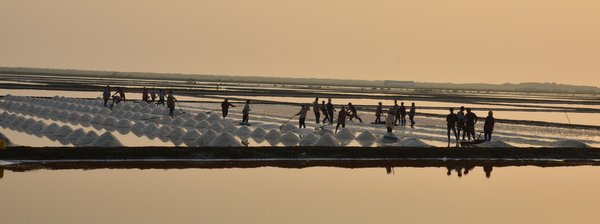
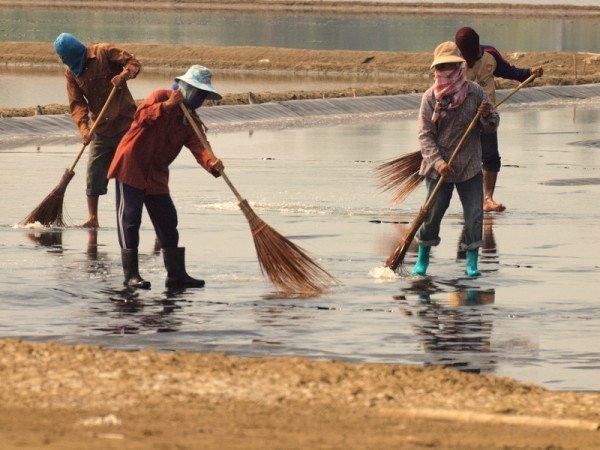





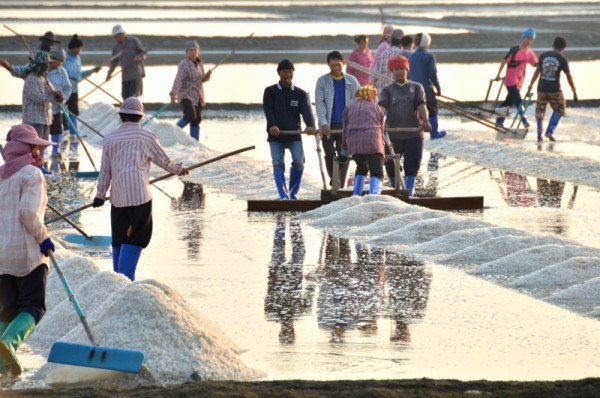
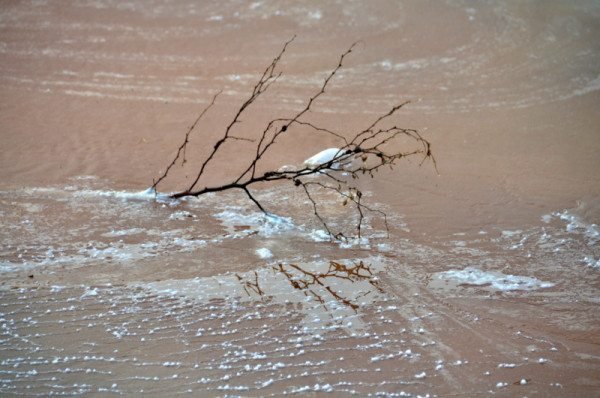
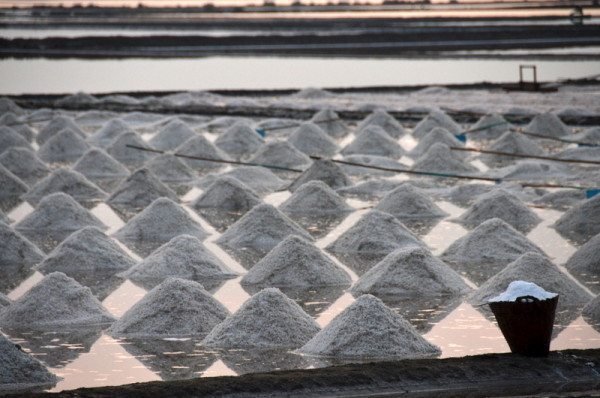





 ORDER YOUR COPY TODAY!
ORDER YOUR COPY TODAY! ORDER YOUR COPY TODAY!
ORDER YOUR COPY TODAY!
Pingback: Birds of Laem Pak Bia, Thailand
Pingback: Nomadic News: 24 May, 2015
Pingback: Nomadic News: 24 May, 2015 | Reisepreis-24.de
These are real awesome shots! I love that sunset view with the pyramids of salts. It looks so lovely.
Hi sofia, when is the best time to visit petchaburi salt farm in order to have nice view of white pyramid?
Before the sun rise or before sunset?
I will be there on May 2017.